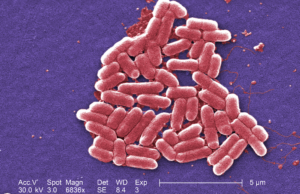30 years after Jack in the Box scandal, food safety issues still underreported - Association of Health Care Journalists

Decades after fast food chain Jack in the Box served undercooked hamburgers, sickening 700 people and killing four children, lack of federal oversight of the nation's food supply is still causing illness and death. Seattle-based food safety advocate and trial lawyer Bill Marler, who became nationally prominent on food safety issues after representing families in the Jack in the Box case in 1993, sees many of the same issues today.
"You might think, 'Oh, I haven't heard anything about this problem for a while, so I guess everything is okay,'" Marler said during a June 14 AHCJ webinar. "Well actually, it's because the government is not telling you that it is an ongoing problem."
"The mix of food causing problems may have changed, but the problems we have today are the problems we had 10, 15, 20 years ago," Marler added.
The Centers for Disease Control and Prevention estimates that there are roughly 9.4 million cases of foodborne illness each year, resulting in an estimated 56,000 hospitalizations and 1,350 deaths annually. Food safety experts say the cause is a combination of a lack of regulation and dysfunction within the Food and Drug Administration, according to an April 2022 Politico report.
Last year, stories about recalled infant formula once again raised national awareness about risks in the food supply. This may be a driving force behind the House of Representatives pushing the FDA in June 2023 to make changes that could strengthen food safety in the coming years.
Meanwhile, the infant formula contamination story continues.
In March 2023, powdered infant formula manufacturer Perrigo Pediatrics issued a voluntary recall for its Gerber Good Start SoothePro Powdered Infant Formula. The formula, made in early January 2023 in a Wisconsin plant, was potentially tainted with Cronobacter sakazakii, a rare bacteria that can cause severe illness and death in infants. Despite the recall warning, retailers continued to sell it in eight states. In 2022, the same deadly bacteria was found in formula made by Abbott Nutrition and was linked to nine infant deaths.
Where to find food safety story ideas
Both the FDA and the CDC provide plenty of fodder for story ideas through regular reports on food recalls. Even so, "there are many, many, many food outbreaks that are never reported by the FDA or to the CDC," Marler said during the webinar.
Journalists can spur change by reporting more often on the stories of people affected by food poisoning and by warning consumers whose foods are most vulnerable to pathogens, he said.
"Make the stories of what happens to these people real" by writing about them, Marler said.
After the Jack in the Box outbreak, publicity surrounding the children's deaths led federal regulators in 1994 to classify the type of deadly bacteria that had caused the illness — E. coli O157:H7 — as a contaminant and reportable to the CDC when found in food. It is now illegal to sell hamburger meat with E. coli O157:H7.
Prior to 1994, there was no regulation that prevented hamburger meat infected with this E. coli variant from being sold nor was reporting it to federal regulators required. Since then, the number of foodborne outbreaks related to hamburger meat has plummeted.
"This was a pivot point in food safety in the United States," he said because it demonstrated that food safety regulations work.
For more story ideas and resources to cover food-borne outbreaks:
Comments
Post a Comment